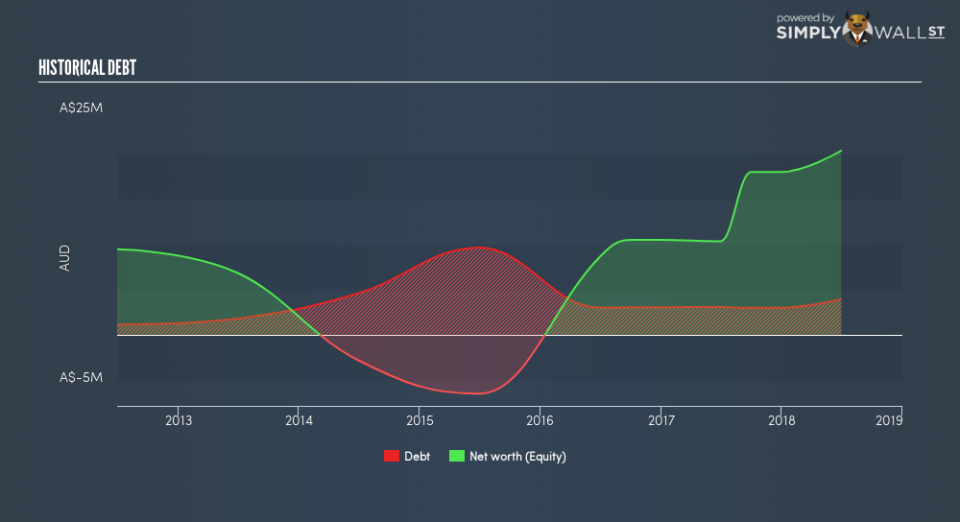How Financially Strong Is The Food Revolution Group Limited (ASX:FOD)?

While small-cap stocks, such as The Food Revolution Group Limited (ASX:FOD) with its market cap of AU$35.2m, are popular for their explosive growth, investors should also be aware of their balance sheet to judge whether the company can survive a downturn. Assessing first and foremost the financial health is essential, since poor capital management may bring about bankruptcies, which occur at a higher rate for small-caps. I believe these basic checks tell most of the story you need to know. Though, since I only look at basic financial figures, I recommend you dig deeper yourself into FOD here.
How much cash does FOD generate through its operations?
FOD’s debt levels surged from AU$3.1m to AU$3.9m over the last 12 months made up of predominantly near term debt. With this increase in debt, FOD’s cash and short-term investments stands at AU$1.9m for investing into the business. On top of this, FOD has produced cash from operations of AU$2.1m over the same time period, leading to an operating cash to total debt ratio of 52.9%, signalling that FOD’s operating cash is sufficient to cover its debt. This ratio can also be interpreted as a measure of efficiency as an alternative to return on assets. In FOD’s case, it is able to generate 0.53x cash from its debt capital.
Can FOD meet its short-term obligations with the cash in hand?
At the current liabilities level of AU$16.7m liabilities, it appears that the company has not maintained a sufficient level of current assets to meet its obligations, with the current ratio last standing at 0.61x, which is below the prudent industry ratio of 3x.
Is FOD’s debt level acceptable?
With a debt-to-equity ratio of 19.3%, FOD’s debt level may be seen as prudent. This range is considered safe as FOD is not taking on too much debt obligation, which may be constraining for future growth.
Next Steps:
FOD’s high cash coverage and conservative debt levels indicate its ability to utilise its borrowings efficiently in order to generate ample cash flow. But, as shareholders, you should try and determine whether this level of debt is justified for FOD, especially when liquidity may also be an issue. Keep in mind I haven’t considered other factors such as how FOD has been performing in the past. I suggest you continue to research Food Revolution Group to get a better picture of the stock by looking at:
Valuation: What is FOD worth today? Is the stock undervalued, even when its growth outlook is factored into its intrinsic value? The intrinsic value infographic in our free research report helps visualize whether FOD is currently mispriced by the market.
Historical Performance: What has FOD’s returns been like over the past? Go into more detail in the past track record analysis and take a look at the free visual representations of our analysis for more clarity.
Other High-Performing Stocks: Are there other stocks that provide better prospects with proven track records? Explore our free list of these great stocks here.
To help readers see past the short term volatility of the financial market, we aim to bring you a long-term focused research analysis purely driven by fundamental data. Note that our analysis does not factor in the latest price-sensitive company announcements.
The author is an independent contributor and at the time of publication had no position in the stocks mentioned. For errors that warrant correction please contact the editor at editorial-team@simplywallst.com.

 Yahoo Finance
Yahoo Finance 
